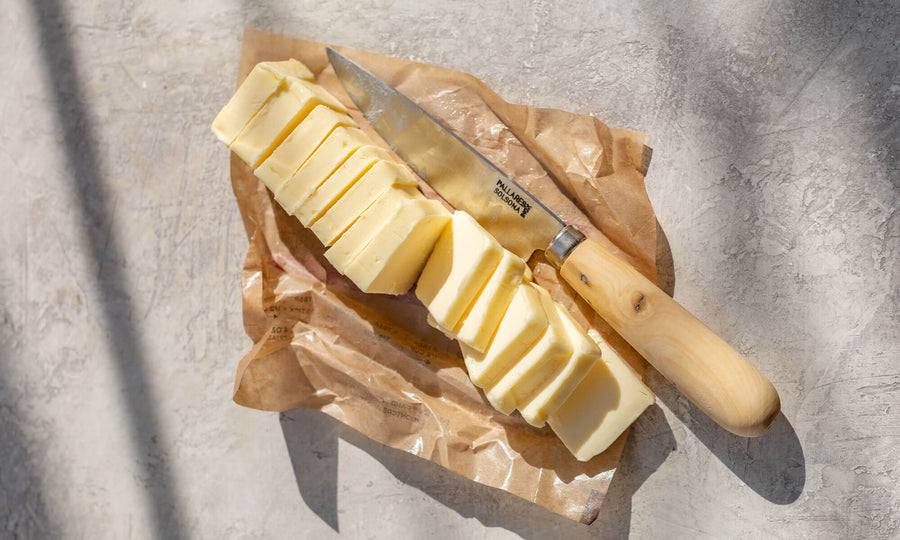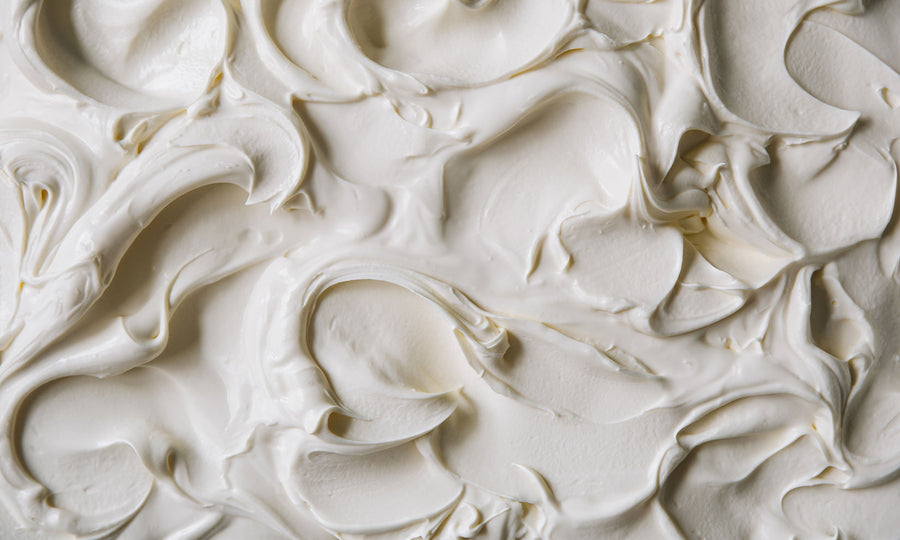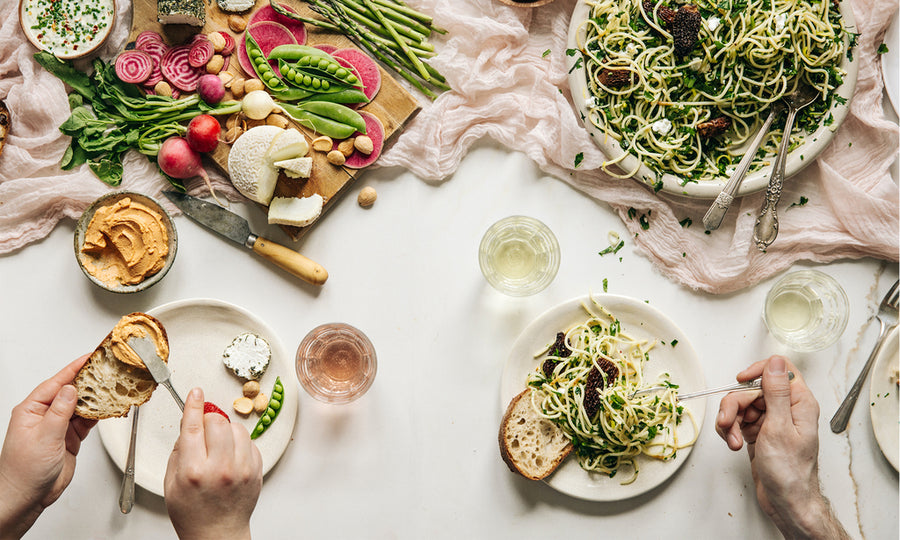The Vermont Creamery story begins with their mild, fresh goat’s milk cheese—and so does the American goat cheese story.
Allison Hooper and Bob Reese founded Vermont Creamery in 1984, when few others were making fresh goat cheese in the US. Allison had just returned from a cheesemaking internship in France and Bob was working for the Vermont Department of Agriculture, where he was tasked with organizing a dinner with state-made ingredients. His French chef requested goat cheese, so Bob asked Allison to whip something up on the fly—and Vermont Creamery was born.
Nearly 40 years later, Vermont Creamery is still the most popular brand of goat cheese in the US, and with good reason. Borrowing from goat cheese’s past in France’s Loire Valley—where it’s been made since the eighth century—Vermont Creamery brought the style into the future with clean, mild flavors that welcome even the pickiest eater. If you’re unfamiliar with goat cheese or have had bad experiences with it in the past, this goat cheese was created especially for you.
“Goat’s milk should not taste barny,” says Vermont Creamery president Adeline Druart, who was raised in France and came to the US to intern for Vermont Creamery in 2003. Druart says the approachable flavor of Vermont Creamery Goat Cheese is attributable to conditions at the farms they work with—animals are healthy, given fresh bedding frequently, and fed with high-quality hay or carefully fermented silage to produce a fresh-tasting milk that is low in microbes and high in protein.
So how does that milk become one of the country’s most beloved goat cheeses? It’s brought to the creamery from family farms, then pasteurized and cultured for 20 hours with a blend of bacterial starter cultures that perform best over long periods of time. Similar to those found in yogurt-making, Vermont Creamery’s cultures produce lemony flavors that celebrate goat cheese’s bright, lively character.
As the milk cultures, proteins come together to form a mousse-like curd that’s then very carefully drained through cheesecloth to extract the whey without disturbing the velveteen texture. Once drained, the curd is ready to be shaped into logs and, if destined for one of Vermont Creamery’s flavored Goat Cheeses, hand-rolled in sophisticated ingredient blends. Great care is put into choosing these flavors and sourcing these ingredients—nothing is added to Vermont Creamery Goat Cheese that doesn’t enhance or elevate the dreamy texture and welcoming flavor their cheesemakers work so hard to create.
Druart says that the team at Vermont Creamery is obsessive about taste and texture. “Cheesemaking craft is 50-percent art and 50-percent science,” she says, “which I love because this means our learning is never done and our craft can always improve.”
10 ways to use Vermont Creamery Goat Cheese
-
Does your recipe call for shredded cheese or feta? Swap it for Vermont Creamery Crumbled Goat Cheese.
-
Want to serve Ants on a Log, without the peanut butter? Spread any of the Vermont Creamery Goat Cheese flavors onto a celery stick.
-
Add instant umami to a grilled steak by slathering it with some Vermont Creamery Goat Cheese mixed with fresh-cracked pepper.
-
For a quick dessert full of complex flavors, top fresh pear slices with Vermont Creamery Goat Cheese, then drizzle with a dark chocolate sauce.
-
Round out your brunch spread with Vermont Creamery Goat Cheese mixed with vanilla and honey, served as a dip for fruit or atop pound cake.
-
Dried apricots topped with a little Vermont Creamery Goat Cheese and sprinkled with chopped pistachios make for a fancy afternoon snack.
-
Level up your goat cheese and beet salad with flavored Vermont Creamery Goat Cheese logs or crumbles.
-
Fold Vermont Creamery Goat Cheese into scrambled eggs or mix into your favorite omelette, quiche, or frittata recipe.
-
Elevate your breakfast toast with a smear of goat cheese beneath your favorite jam, or replace the cream cheese on your bagel with a flavored Vermont Creamery Goat Cheese.
-
Blue cheese burgers too intense for you? Try a goat cheese burger instead by mixing Vermont Creamery Crumbled Goat Cheese into patties for a bright and lively burger experience!
Tips for cheese plating Vermont Creamery Goat Cheese
-
Try a wire. Fresh goat cheese is softer than a lot of cheeses, and therefore prone to spreading or smearing when you break it down into bite-size pieces for a cheese plate. A cheese wire will give you perfect round medallions every time—once you try it, you’ll wonder how you ever lived without.
-
Freeze first. You can also turn out cleaner crumbles and rounder medallions from Vermont Creamery Goat Cheese logs by freezing them for 15–20 minutes in their packaging to firm up the cheese before slicing.
-
Soften the landing. Though goat cheese has made great strides in recent decades, some people are still skittish about it. Put them at ease by making the goat cheese in your spread more approachable with a dollop of honey, caramel, or jam on top before serving.
-
Roll your own. Another way to draw in would-be abstainers? Roll a plain Vermont Creamery Goat Cheese log in ingredients like crumbled crackers or cookies, cacao nibs, citrus zest, chopped candied nuts, or raw sugar and edible flowers to create an inviting display.
To your health! Why Vermont Creamery Goat Cheese is good for you
Your taste buds aren’t the only part of you that will be happy eating Vermont Creamery Goat Cheese, because it’s also chock full of beneficial nutrients. Pulling double duty as both indulgent comfort food and healthy alternative, Vermont Creamery Goat Cheese delivers protein, fat, phosphorus, copper, iron, magnesium, niacin, riboflavin, and vitamin A in a delicious package. As a cultured dairy product, it contains gut-friendly probiotics that make it easier to digest and can also reduce inflammation and boost immunity. Some lactose-intolerant people report fewer symptoms with goat cheese, due to its low levels of lactose and A1 casein. And with tons of short- and medium-chain fatty acids—healthy fats—your body can turn it into energy fast, leaving you feeling full and satisfied longer.




